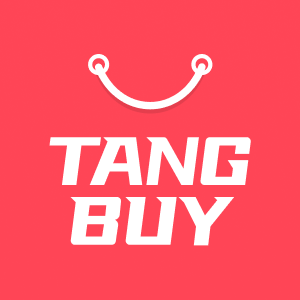Top Social Media Marketing Strategies for Online Business Success in 2025
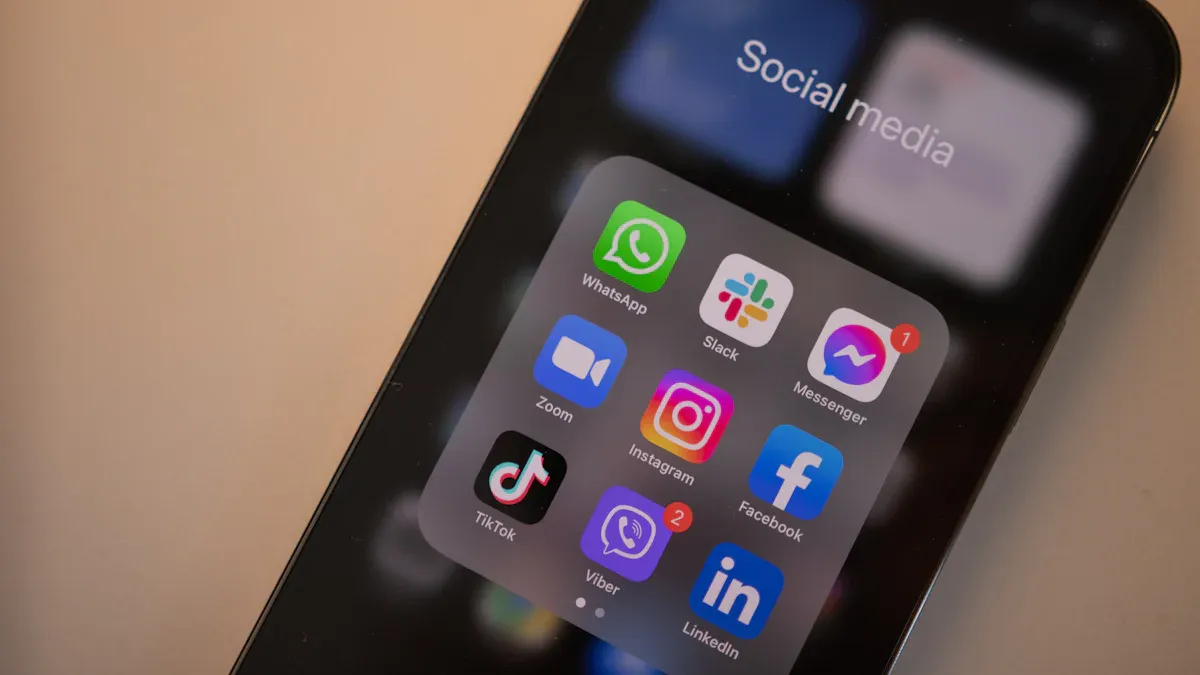
You want to stay ahead in 2025. It is harder than ever to get noticed. Social Media Marketing is growing very quickly. There are 5.42 billion users all over the world. Ad spend will reach $276.7 billion.
Metric | Statistic for 2025 |
|---|---|
Total social media users worldwide | 5.42 billion |
Social media ad spend projection | $276.7 billion |
Marketers planning to increase efforts | 93% |
Following new trends helps you build trust. It also brings more people to your website. You can get more sign-ups too. If you use data, stay steady, and try new things, your business will grow.
Key Takeaways
Make clear and specific social media goals. These goals should match your business aims. This will help you know what to do and see if you succeed.
Learn about your audience very well. Use social listening and buyer personas. This helps you make content that connects with people and builds loyalty.
Use short videos on TikTok and Instagram Reels. These videos get attention fast. They help you get more likes and shares with fun, real content.
Post often and follow a set schedule. This helps people trust you. It also keeps your followers interested and lets them see your posts more.
Watch important numbers like likes, sales, and customer happiness. This shows what works. You can use this to make your plan better all the time.
Use paid ads in a smart way. Aim them at new and old customers. Use live data to get the best results for your money.
Use AI tools to help make content, write posts, and answer customers. This saves time and makes your social media better.
Work with micro-influencers and ask fans to make content. This builds trust and helps you reach more people. It also helps tell real stories about your brand.
Social Media Marketing Strategy
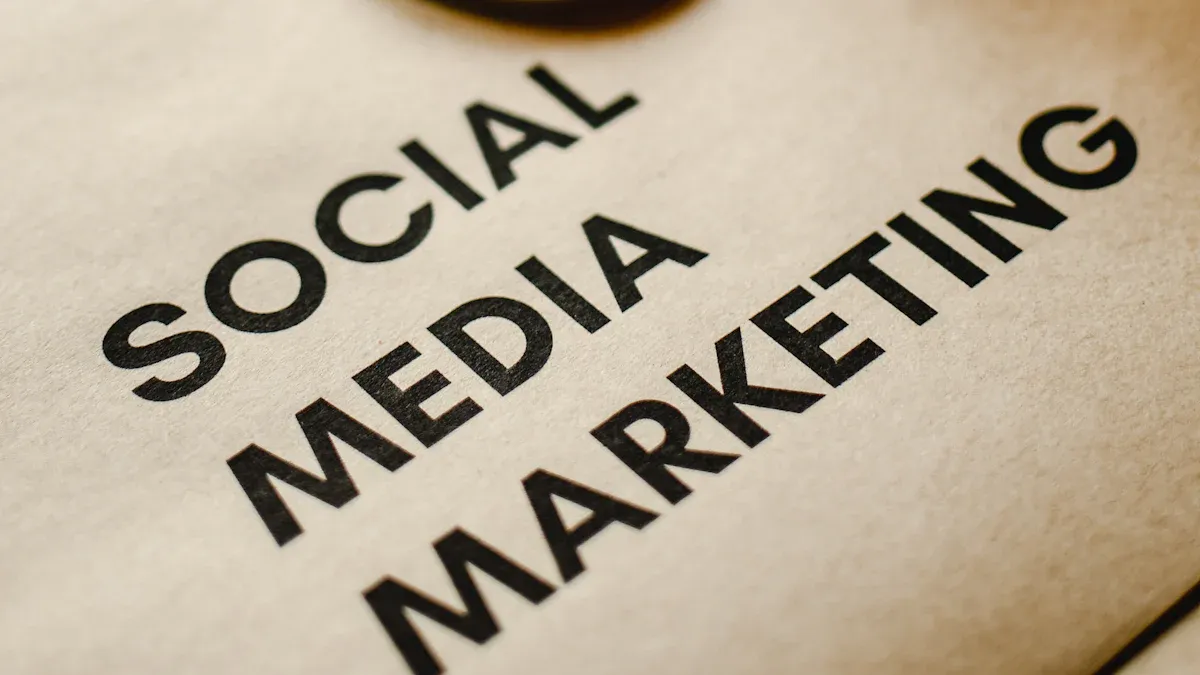
You want your Social Media Marketing to deliver real results in 2025. You need a plan that helps you stand out and reach your business goals. Let’s break down how you can set clear goals and understand your audience for the best chance of success.
Goal Setting
Defining Objectives
Start with clear, specific objectives. You should know what you want to achieve before you post anything. Hootsuite points out that a strong plan guides your actions and helps you track your progress. When you set goals, you make sure every post and campaign moves you closer to your business wins.
The SMART framework is a great place to begin. SMART stands for:
Letter | Meaning | Example Objective |
|---|---|---|
S | Specific | Gain 1,000 new followers on Instagram |
M | Measurable | Track follower growth weekly |
A | Achievable | Use proven tactics and realistic targets |
R | Relevant | Focus on platforms your audience uses |
T | Time-bound | Reach your goal in three months |
You can also try other frameworks like OKRs (Objectives and Key Results) or CLEAR goals if you want to match your team’s style. For small teams, SMART and OKRs work well. Bigger companies might use Balanced Scorecard or 4DX. Pick the one that fits your business best.
Aligning with Business Goals
Your social media objectives should always match your main business goals. If you want more sales, set goals that drive traffic to your shop. If you want to build trust, focus on engagement and community. When your social media plan lines up with your business plan, you get better results and can show the value of your work.
Audience Research
Social Listening
You need to know what your audience cares about. Social listening tools help you track real-time conversations and spot new trends. Brands like Atlassian use these tools to join industry talks, not just product chats. This builds a strong community and keeps your brand top of mind.
Social listening lets you:
Find out what people say about your brand
Spot new topics and trends
Learn what your competitors are doing
Give quick, personal replies to your followers
Buyer Personas
Create buyer personas to understand your ideal customers. Look at your social media data to find out what your audience likes, where they spend time, and what problems they want to solve. This helps you make content that speaks to them and keeps them coming back.
Tip: Use your audience research to shape every post, story, and ad. When you know your audience, you can build loyalty and boost your results.
Short-Form Video

Short-form video is very popular in 2025. You see it on every social media feed. It grabs people’s attention quickly. If you want your business to stand out, you must learn this format. Let’s see where to post and what videos work best.
Platform Selection
TikTok
TikTok is the top place for short-form video. You can find many creative ideas here. The discovery algorithm helps your videos go viral. Even small accounts can get lots of views. People in the US spend about 58 hours a month on TikTok. That gives your brand many chances to be seen. TikTok videos are short, under 30 seconds. This keeps viewers interested and coming back.
Instagram Reels
Instagram Reels is another great choice. People spend half their time on Instagram watching Reels. Influencers like Reels because it gets the most engagement. Reels lets people buy products without leaving the app. The average session time for Reels is 53 minutes. This is the highest among short-form video platforms.
Platform | Additional Engagement Insights | |
|---|---|---|
Instagram Reels | 53 | Highest average session time among short-form video platforms |
TikTok | 45 | Leader in total monthly usage (58.4 hours) |
Snapchat Spotlight | 30 | Lower engagement compared to TikTok and Instagram |
Triller | 22 | Lowest average session time among listed platforms |
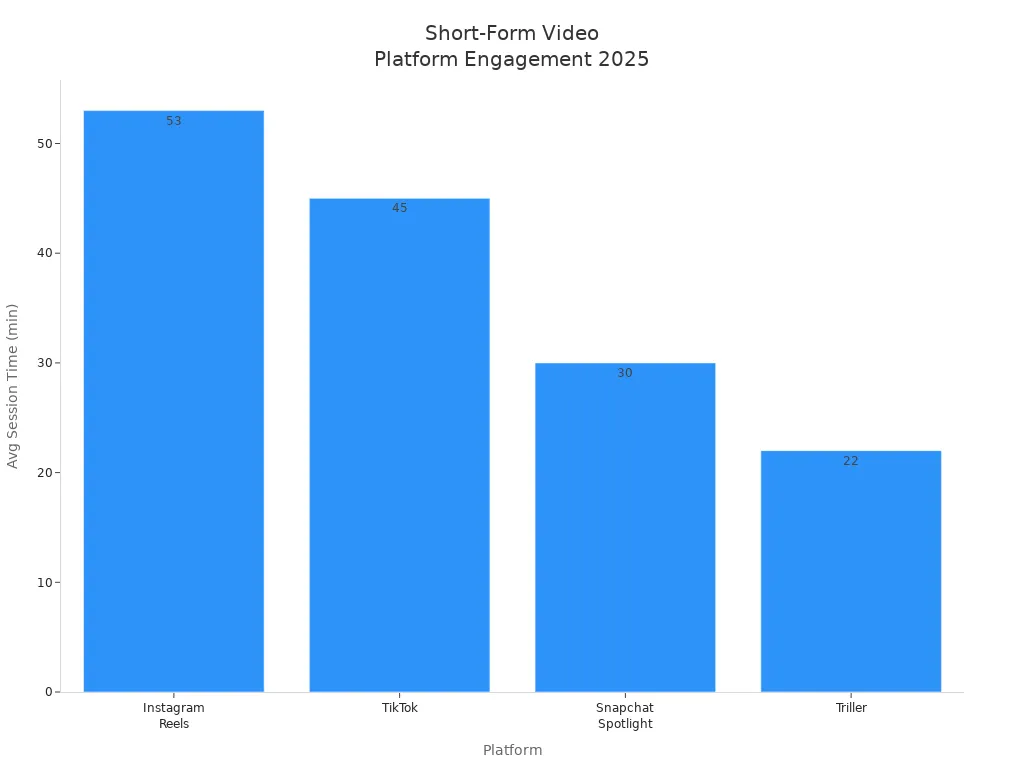
Tip: Use TikTok and Instagram Reels for the best results. These platforms have the most user engagement and watch time.
Content Ideas
Trends
You want your videos to feel new and fun. Use trending sounds, challenges, and hashtags. Videos under 15 seconds get the most likes on Instagram. Interactive videos, like polls or quick Q&As, can help boost sales by up to 80%. Shoppable videos let people buy straight from your video.
Good short-form video ideas:
Product demos
Quick tips
User-generated content
Influencer collaborations
Marketers say 66% of short-form videos get the most engagement. 93% agree these videos help you reach new customers.
Storytelling
Storytelling helps people remember your brand. Use short clips to show real people or behind-the-scenes moments. You can also share customer stories. Real videos build trust and keep viewers watching. Try to keep your videos under 30 seconds for the best results. Add captions so everyone can understand, even with the sound off.
Note: Businesses using video content grow revenue 49% faster than those that do not. Keep your stories simple, real, and easy to share.
Consistency
Staying consistent on social media helps you build a strong brand and grow your audience. People trust brands that show up regularly. You want your followers to know when to expect new posts from you. Consistency also helps you stay top of mind and keeps your engagement high.
Posting Schedules
Frequency
You do not need to post every day to see results. What matters most is sticking to a regular schedule. Studies show that highly consistent posters get up to 450% more engagement per post than those who post at random. Even if you post just once a week, you can still see a big boost in engagement and audience growth. Posting regularly for about 20 weeks leads to the highest engagement levels. This means your followers know when to look out for your content, and they are more likely to interact with it.
Tip: Choose a posting frequency you can keep up with. It is better to post once a week every week than to post daily for a month and then disappear.
Consistent posting builds trust and credibility. Your audience knows what to expect.
Regular posts give more chances for people to interact with you.
Social media algorithms reward accounts that post on a schedule. This means more people see your posts.
Planning your posts saves time and reduces stress.
Mixing up your content keeps your feed interesting.
Tools
You do not have to do everything by hand. Social media management tools like Buffer, Hootsuite, or Later help you plan and schedule posts ahead of time. These tools let you pick the best times to post for your audience. You can also track how your posts perform. This makes it easier to stay consistent, even when you are busy.
Note: Scheduling tools help you post at the right time, keep your feed active, and free up your day for other tasks.
Brand Voice
Messaging
Your brand voice is how you sound online. It is the personality behind your words. To create a strong brand voice, start by learning about your audience. Find out what they like, how they talk, and what matters to them. Next, define your brand’s mission. What do you want to achieve? How do you want people to feel when they see your posts?
Decide on your brand’s personality. Are you friendly, playful, or serious?
Write down your brand voice rules. Include words you use often and words you avoid.
Make sure everyone on your team follows these rules.
Use the same tone everywhere—on social media, your website, and emails.
Brands like Skittles and Spotify stand out because they have a unique and consistent voice. They connect with people by sounding real and relatable.
Visuals
Your visuals should match your brand voice. Use the same colours, fonts, and style in every post. This helps people recognise your brand right away. Create templates for your posts to save time and keep everything looking sharp. Add your logo or a special hashtag to your images and videos. This makes your content easy to spot and share.
Remember: Consistency in both words and visuals builds trust and makes your brand memorable.
Analytics

You want to know if your Social Media Marketing is working. Analytics gives you the answers. When you track the right numbers, you see what works and what needs to change. Let’s break down how you can use analytics to grow your online business.
Performance Tracking
Key Metrics
Not all numbers matter the same. Some just look good but do not help your business. You want to focus on key metrics that show real results. Here’s a table to help you see which numbers to track and why they matter:
Metric Category | Key Metrics / Examples | Purpose / What It Measures |
|---|---|---|
Awareness Metrics | Impressions, Follower Growth | Shows how many people see your content and how your brand is growing |
Engagement Metrics | Likes, Comments, Shares, Amplification Rate | Tells you if people interact with your posts and if your content connects with your audience |
Conversion Metrics | Conversion Rate, Referral Traffic | Measures if your posts lead to website visits, downloads, or sales |
Customer Satisfaction | Net Promoter Score (NPS), Customer Satisfaction Score (CSAT) | Checks if your customers are happy and likely to recommend you |
Cost-Efficiency Metrics | Cost Per Thousand (CPM) | Shows if your paid campaigns give you good value for your money |
You want to move beyond vanity metrics like just counting followers. Focus on numbers that link your social media work to real business goals, such as sales or new leads. This way, you can show the true impact of your efforts.
Tools
You do not need to track everything by hand. Use tools like Socialinsider, Google Analytics, or Zoho CRM. These tools help you see your results in one place. You can set up dashboards to spot trends quickly. Some tools even let you compare your results with your competitors.
Tip: Pick one or two tools that fit your business size and goals. Start simple, then add more features as you grow.
Optimisation
Data-Driven Decisions
Analytics helps you make smart choices. Set clear goals, like growing your followers or boosting sales. Choose KPIs that match these goals. Check your dashboard often to see what is working. If you see a post doing well, make more like it. If something flops, try a new idea.
Refinement
You want to keep improving. Look at your data every week or month. Change your plan based on what you learn. Try different types of posts for each platform. Use AI tools to spot which content gets the most attention. Benchmark your results against your top competitors. Mix paid ads, organic posts, and user content for steady growth.
Note: The best Social Media Marketing plans always change and improve. Use your numbers to guide you, not just your gut feeling.
Paid Media

Paid media gives your online business a real boost in 2025. You can reach new customers, retarget old ones, and see quick results. Let’s look at the best platforms, smart targeting, and how to get the most from your budget.
Ad Platforms
Facebook remains a top choice for paid ads. You can reach a huge audience and use advanced targeting. Facebook’s social commerce features, like in-app checkout and shoppable posts, make it easy for people to buy without leaving the app. Many brands see strong conversion rates here, especially when they use user-generated content. This builds trust and encourages more people to buy.
Instagram is perfect for visual brands. Reels and Stories ads grab attention fast. Instagram’s shopping tools let users buy products directly from posts. Younger shoppers love this. You can also use influencer partnerships to boost your reach. Instagram’s social commerce features help you turn likes into sales quickly.
LinkedIn works best for B2B businesses. You can target professionals by job title, industry, or company size. LinkedIn ads cost more than Facebook or Instagram, but you get high-quality leads. Microsoft Ads now links with LinkedIn, giving you even more ways to reach business buyers.
Google Ads is still the leader for paid media in 2025. It offers advanced AI, many ad formats, and precise targeting. Over 80% of companies use Google Ads for PPC. Social platforms like Facebook and Instagram shine in social engagement and shopping ads, helping you boost conversions.
Targeting
Cold Traffic
You want to reach people who have never heard of you. Start by segmenting your audience based on interests and behaviour. Use custom audiences from your CRM or social media data. Test different ad copy and images to see what works best. AI-driven platforms help you track and optimise these campaigns. Make sure you time your ads well to avoid ad fatigue.
Build custom audiences from your data.
Test ad copy, images, and calls-to-action.
Use AI to optimise campaigns.
Adjust frequency to keep ads fresh.
Retargeting
Retargeting brings back people who visited your site or left items in their cart. You can show them personalised ads to remind them to finish their purchase. Use A/B testing to improve your ads. AI tools help you track and analyse results. Personalised ads that address pain points work best. Always check your data to see which ads bring people back.
Social commerce platforms like TikTok, Instagram, and Facebook now offer in-app checkout and shoppable posts. These features boost conversion rates and make it easy for users to buy.
Budgeting
50/30/20 Rule
You need a plan for your ad spend. The 50/30/20 rule is simple: spend 50% on proven platforms, 30% on new channels, and 20% on testing fresh ideas. Use real-time data to shift your budget where you see the best results. Avoid showing awareness ads to people who already know you. This can cut costs by up to 25%.
Budget Category | Recommended Allocation (%) |
|---|---|
Digital Marketing (inc. paid ads) | |
Social Media Marketing | 5-15% of digital or overall budget |
ROI
You want to see a return on every pound you spend. Track your results closely. Focus your budget on platforms and campaigns that deliver the highest value. Refine your targeting to reach the right people at the right time. Most paid ads convert at rates between 2% and 3%, but social commerce and user-generated content can push this much higher. Always check your ROI and adjust your spend for the best results.
Tip: Businesses that use real-time data and refine their targeting see better ROI and less wasted spend.
AI & Automation

AI and automation are changing Social Media Marketing in 2025. You can make and manage your content much faster now. These tools help you save time and get better results.
Content Creation
Visuals
You do not have to be a designer to make cool posts. AI tools like Canva and Lately.ai help you make great images and videos. These platforms give you smart templates and design ideas. You can make images, change their size, and keep your brand style the same. AI filters and effects help your pictures stand out, even if you are not good at design.
Platform | Key Features | Advantages | Drawbacks |
|---|---|---|---|
Canva | AI image generation, Magic Resize, branded templates | Easy to use, saves time, keeps branding consistent | Some designs may look generic |
Lately.ai | Content repurposing, AI writing, analytics | Turns old posts into new ones, gives data insights | Focuses more on repurposing |
Hootsuite OwlyWriter AI | Post generation, trending topic suggestions, scheduling | Suggests ideas, helps plan posts, integrates with tools | Only for Hootsuite users |
Tip: Use AI design tools to keep your feed looking good, even when you are busy.
Copywriting
AI can write captions, posts, and blog articles for you. These tools look at trends and your old posts to suggest what to write next. You get posts that sound like your brand and connect with your audience. AI also helps you find the best times to post and which topics are popular. This means you can reach more people with less work.
AI copywriting tools:
Suggest captions for your goals
Turn old posts into new ones
Check what works and help you improve
Chatbots
Customer Service
Chatbots are always ready to help. They answer questions, fix problems, and guide customers any time. You do not need to worry about time zones or busy hours. Chatbots can talk to many people at once, so no one waits long. They also collect feedback and spot common problems, helping you make your service better.
FAQs
You can set up chatbots to answer your most common questions. They use AI to understand what people ask and give the right answers. This saves you time and lets your team focus on bigger problems. Chatbots learn from each chat, so they get better over time. You can even give your chatbot a friendly personality that matches your brand.
Note: Check your chatbot’s answers often and update them to keep customers happy.
Personalisation
Dynamic Content
AI helps you show the right content to the right person at the right time. It looks at what users like, share, and comment on. Then, it suggests posts, videos, or offers that match their interests. This makes your followers feel special and keeps them interested.
Offers
You can use AI to send special offers based on what people do online. For example, if someone clicks on your product posts a lot, AI can send them a discount. This helps you make more sales and builds loyalty. AI also helps you spot trends, so you can make offers your audience will like.
Personalised content and offers make your followers feel important and help you get better results in Social Media Marketing.
Micro-Influencers
Micro-influencers can help your business grow in 2025. They have smaller but highly engaged audiences. Their followers trust them, so their recommendations feel like advice from a friend. You can reach new customers, boost sales, and build your brand without spending a fortune.
Discovery
Tools
You do not have to search for micro-influencers by yourself. There are smart tools that make the job easier:
Use influencer marketing platforms like Ainfluencer. These platforms use AI to match you with the right influencers. You get access to verified databases, audience insights, and secure payments.
Search on social media platforms. Try Instagram, TikTok, YouTube, or even LinkedIn. Use niche hashtags and keywords to find people who talk about your industry.
Use Google to find influencers. Look for site-specific results or check out what your competitors are doing.
Watch your competitors. See who they tag or mention in their posts. You might find great micro-influencers this way.
Tip: Influencer platforms save you time and help you find people who fit your brand.
Vetting
Not every influencer is a good fit. You need to check a few things before you start working together. Here’s a handy table to guide you:
Vetting Criteria | What to Look For |
|---|---|
Consistency & Recent Engagement | Regular posts with steady likes and comments, not just one viral hit |
Audience Demographics & Interests | Followers who match your target age, location, and interests |
Authenticity (Fake Followers) | Real followers, not bots—about 25% of influencers have fake followers |
Past Brand Collaborations | Good feedback and engagement on previous sponsored posts |
Content Quality & Brand Fit | Posts that match your brand’s style and values |
Engagement Rate | High engagement rates (aim for 5% or more with micro-influencers) |
You want influencers who talk to their followers, not just at them. Check their comments and see if people reply. Look for real conversations.
Collaboration
Partnerships
Working with micro-influencers is all about building real partnerships. You get better results when you let them share your brand in their own way. Their stories feel natural and honest. Try these ideas:
Let influencers create content that fits their style. Authentic posts work best.
Warm up their audience before a campaign. Ask them to share fun or helpful posts about your topic.
Choose influencers with high engagement, not just big follower numbers.
Work with several micro-influencers at once. This helps you reach different groups and keeps costs low.
Build long-term relationships. Loyal influencers become true brand fans.
Micro-influencers often cost between $100 and $300 per 10,000 followers. This makes them affordable for small businesses.
KPIs
You need to track your results. Set clear goals before you start. Here are some KPIs to watch:
Engagement rate (likes, comments, shares)
Follower growth
Website traffic from influencer posts
Sales or sign-ups from special links or codes
Brand mentions and hashtag use
Micro-influencers can boost engagement by up to 60% compared to bigger influencers. Brands have seen sales jump by 30–40% after running micro-influencer campaigns. When you track the right numbers, you see what works and can do even better next time.
User-Generated Content
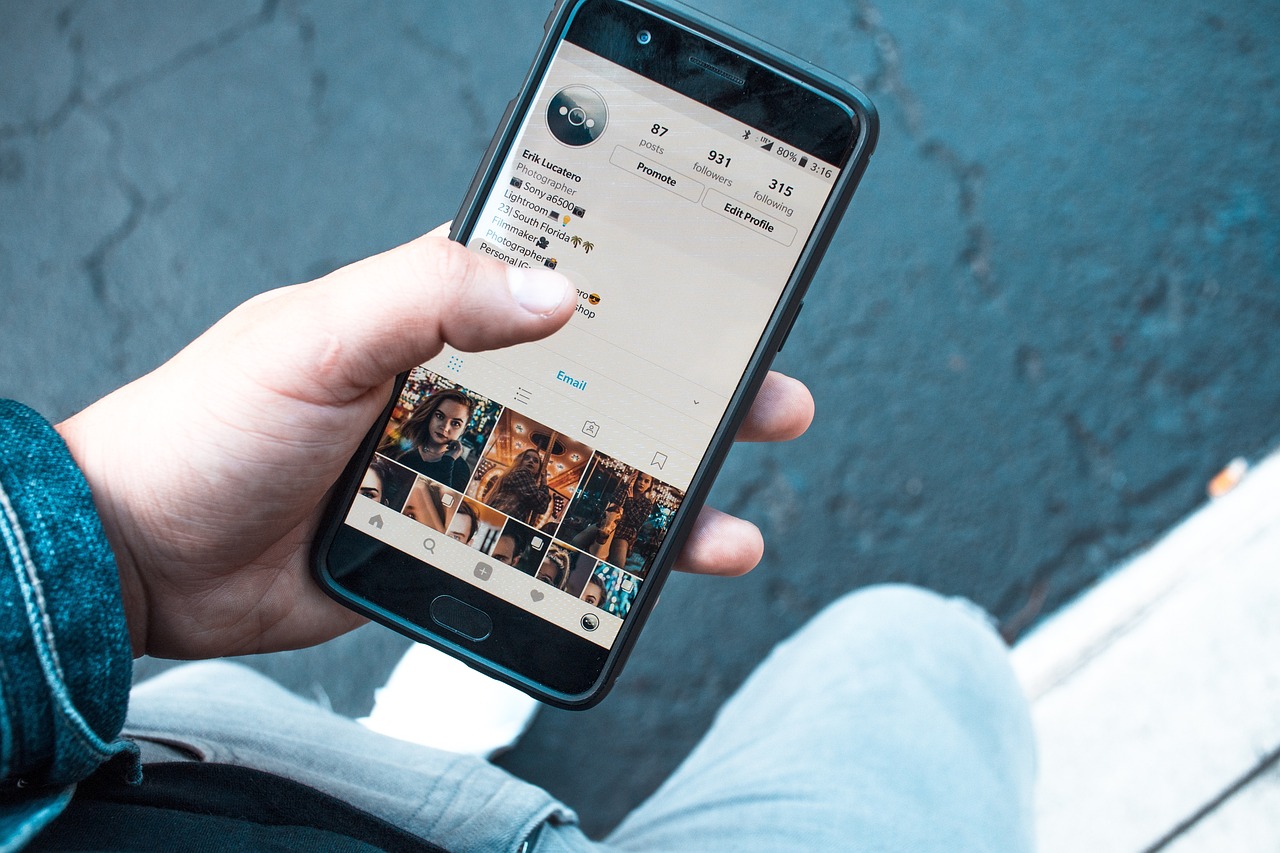
User-generated content is very important for online businesses in 2025. When customers share their own photos, videos, or reviews, it helps your business. This makes people trust you more and starts real conversations. People want to see real stories, not just fancy adverts. User-generated content makes your brand seem honest and friendly.
Campaigns
Hashtags
Branded hashtags are a simple way to get people talking. You can make a fun hashtag and ask followers to use it. They use it when they post about your products. This lets you collect lots of posts in one place. It also makes it easy for others to join in.
Hashtags help more people see your brand and join in.
You can find new ideas by looking at posts with your hashtag.
People like it when brands share their posts.
Tip: Pick a hashtag that is short, easy to remember, and special to your brand. Ask your audience to use it in their posts and stories.
Contests
Contests are a great way to get your community excited. You can ask people to share photos, videos, or stories to win a prize. This fills your page with real content and makes people talk about your brand.
Run photo or video contests on Instagram or TikTok.
Give prizes for the most creative or popular post.
Share the best entries on your main page.
Good user-generated content campaigns use both contests and hashtags. For example, the Barbie AI Selfie Generator let people make and share their own pictures. It reached over 13 million people. When you make things easy and fun, more people will join.
User-generated content campaigns get almost seven times more engagement than brand-made posts. Videos and customer reviews work especially well.
Community
Showcasing
Showing off your customers’ posts is a good way to build loyalty. When you share real people using your products, others want to join in too. You can post customer photos, reviews, or short videos on your social media.
Statistic | Insight |
|---|---|
72% like seeing real customer photos and videos online | |
80% are more likely to buy if they see real customer images or videos |
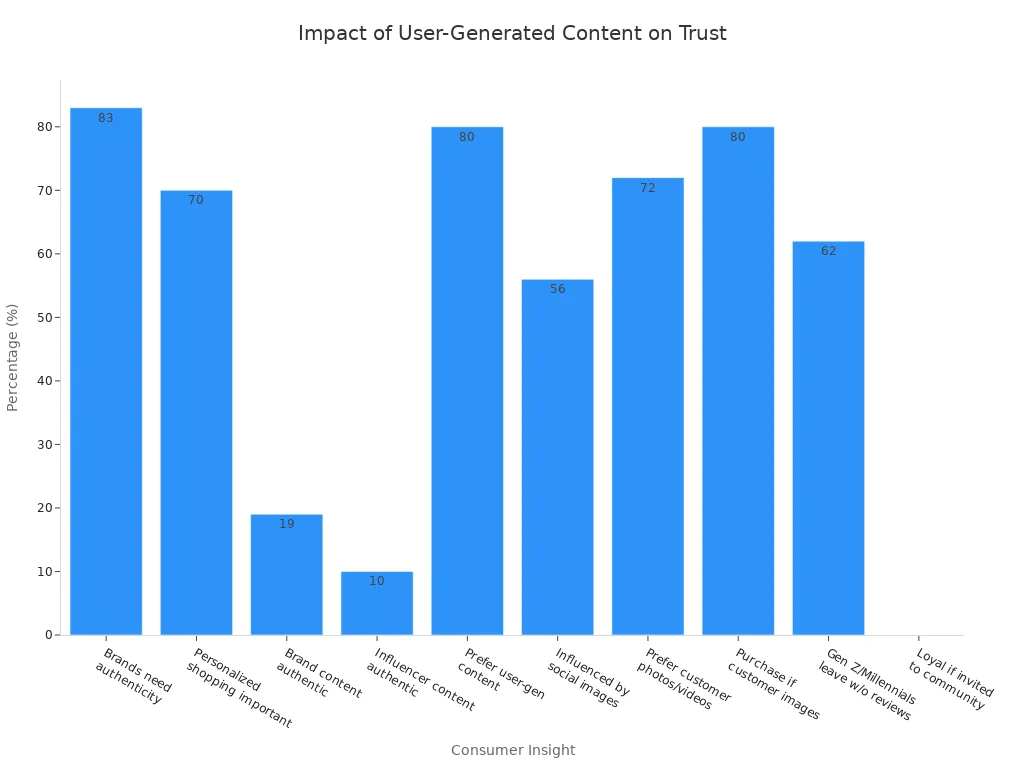
People trust other customers more than adverts. In fact, 79% say posts from real users help them decide what to buy. Over 80% have bought or thought about buying after seeing a friend’s post.
When you share user-generated content, your brand feels real and trustworthy. This helps you stand out from others.
Moderation
Moderation keeps your community safe and friendly. You need to check posts before sharing to make sure they fit your brand. Set clear rules for what is okay. Use AI tools to spot spam or bad posts quickly.
Reply to good posts and thank the people who made them.
Remove anything that could hurt your brand’s image.
Encourage kind and helpful chats.
Building a strong online community with user-generated content helps you earn trust and loyalty. People feel included and important when you share their posts. This turns happy customers into fans who tell others about you.
A friendly online community makes people want to stay with your brand. Over 60% say they would stay loyal if you invite them to join your customer community.
Social Selling

Social selling is a smart way to turn your social media followers into loyal customers. You do not just post and hope for sales. You build real relationships, guide leads through your sales pipeline, and close deals with trust.
Relationship Building
Engagement
You want people to notice you and remember your brand. Start by building a strong personal brand. Make your profile look professional and friendly. Show your expertise in your posts and comments. Next, find the right buyers. Use social listening tools to spot people talking about your industry. Join their conversations and offer helpful advice.
Here are some top tactics for building relationships on social media:
Build a strong personal brand with a polished profile that shows your expertise.
Find the right buyers using focused outreach and social listening.
Engage prospects by sharing valuable and relevant content, not just sales pitches.
Join groups and communities in your industry to connect and build rapport.
Use social selling tools and CRM systems to keep your outreach organised.
Tailor your approach to each platform, like LinkedIn, Instagram, or TikTok.
Focus on quality connections and share value-driven content to build trust.
Tip: People trust brands that listen and help, not just those that sell. Show up, join in, and be helpful.
Trust
Trust is the heart of social selling. You earn it by being real and consistent. Share stories, answer questions, and celebrate your customers’ wins. When you reply quickly and honestly, people feel valued. Over time, they see you as a trusted expert, not just another business.
Share behind-the-scenes moments.
Highlight customer reviews and success stories.
Always keep your promises.
Sales Pipeline
Lead Nurturing
You need to guide your leads from first contact to final sale. Content marketing helps you do this. Share useful tips, how-to guides, and case studies. Keep your content fresh and tailored to your audience. Use a content calendar to stay visible and relevant.
A good sales pipeline on social media looks like this:
Stage | What You Do | Tools to Use |
|---|---|---|
Awareness | Share helpful content and join conversations | Social listening, CRM |
Interest | Offer free resources or tips | Content calendar, DMs |
Consideration | Answer questions and share case studies | Chatbots, FAQs |
Decision | Give special offers or demos | Personalised messages |
Action | Make it easy to buy or sign up | Shoppable posts, links |
Note: Use automation tools to send the right message at the right time. This keeps leads warm and moving forward.
Closing Deals
Closing deals on social media feels natural when you have built trust. Use attribution modelling to see which posts or messages lead to sales. This helps you focus on what works best. Align your sales and marketing teams so leads never fall through the cracks. Track your results and keep improving your approach.
Follow up with leads who show interest.
Personalise your offers based on their needs.
Celebrate every win, no matter how small.
You can turn conversations into conversions when you focus on building relationships and guiding leads step by step. Social selling is not just about making sales. It is about creating loyal fans who come back again and again.
Integration

SEO
You want your business to show up everywhere your customers look. SEO and social media work best when you use them together. Start by using the same keywords on your website and your social media posts. This helps search engines and people see what your brand stands for. Make sure your social media profiles use these keywords too. When you do this, you boost your chances of getting found online.
Here are some simple ways to blend SEO with your social media:
Share high-quality, engaging content that your audience loves.
Cross-promote your blog posts and videos on all your channels.
Build real relationships by replying to comments and joining conversations.
Add social sharing buttons to your website so people can share your content easily.
Keep an eye on your results and tweak your plan as you go.
When you link your SEO and social media, you create a strong, clear message. This makes it easier for people to find you and trust your brand.
Paid Ads
Paid ads help you reach more people fast. You can use what you learn from your SEO and social media to make your ads even better. For example, if you know which keywords bring you the most visitors, use them in your ad copy. This keeps your message clear and focused.
Try these tips to get the most from your paid ads:
Use the same keywords and brand voice in your ads as you do in your posts.
Test different images and headlines to see what works best.
Track your results, like clicks and sales, to see which ads give you the best return.
Combine paid ads with organic posts for a bigger impact.
Paid ads and social media work well together. You can use ads to boost your best posts or retarget people who have already visited your site.
Cross-Channel
You want your brand to feel the same everywhere. Cross-channel marketing helps you do this. It means you share your message across social media, email, your website, and even paid ads. Each channel has its own strengths. Social media builds awareness, while email helps you keep in touch with your best customers.
Keep your brand message and style the same on every channel.
Use data to see what your audience likes on each platform.
Personalise your messages based on what people do and where they spend time.
Let your social posts drive people to sign up for your emails or visit your website.
Retarget your audience across channels to remind them about your brand.
Cross-channel marketing builds trust and keeps your brand top of mind. When you connect your channels, you give your customers a smooth, friendly experience that makes them want to come back.

Trends 2025
Staying ahead in social media means you need to spot new trends before your competitors do. In 2025, you will see big changes in how people search, where they spend time online, and what kind of content grabs their attention. Let’s look at what you should watch out for and how you can use these trends to grow your business.
Voice Search
Voice search is changing the way people find brands online. More users now ask their phones or smart speakers for quick answers. You want your content to show up when someone says, “Find the best trainers near me” or “Show me easy recipes.” To get ready, use simple language and clear answers in your posts. Add questions and answers to your captions or stories. This helps voice assistants pick your content first.
Tip: Try reading your posts out loud. If they sound natural, you are on the right track for voice search.
Emerging Platforms
You do not have to stick with the same old social networks. New platforms are popping up and giving you fresh ways to reach people. In 2025, two names stand out:
Threads: This platform links with Instagram and makes it easy to join in real-time chats. You can build your brand voice and connect with people in a more relaxed way. Threads is great if you want to experiment and show your brand’s human side.
Bluesky: This is a new, open platform that attracts people who care about privacy and honest conversations. If your brand values trust and wants to lead thoughtful discussions, Bluesky is a good place to start.
Both platforms give you a chance to stand out before everyone else joins. You can test new ideas, build a loyal community, and shape your brand’s story from the ground up.
Platform | Best For | Watch Out For |
|---|---|---|
Threads | Building community, real-time chats | Features still growing, not everyone is there yet |
Bluesky | Thought leadership, trust | Smaller audience, fewer ad tools |
Experimentation
You want your brand to feel fresh and exciting. Trying new content formats helps you do this. In 2025, some of the most promising ideas include:
Live streaming: Go live to answer questions, show behind-the-scenes moments, or launch new products. People love real-time interaction.
Augmented reality (AR) and virtual reality (VR): Let your audience try products virtually or explore your brand in a fun, interactive way.
360-degree video: Give viewers a full view of your shop, event, or product.
User-generated content (UGC): Share photos, videos, or reviews from your customers. This builds trust and makes your brand feel real.
Influencer partnerships: Work with trusted voices to reach new fans and add credibility.
Note: Start small. Test one new format each month. Watch what your audience likes best and do more of it.
Trying new things keeps your brand ahead of the curve. You will find what works for your audience and stay one step ahead of your competitors.
You can drive real growth in 2025 by staying flexible and open to new Social Media Marketing strategies. Keep refining your approach and use data to guide your next steps. When you create high-quality content, engage with your audience, and try new formats, you build trust and boost results.
Brands that monitor engagement and innovate see big jumps in reach and loyalty.
Mixing organic and paid campaigns often leads to more sales and followers.
Now is the time to make your action plan. Start testing these tactics and watch your business thrive.
FAQ
What is the best social media platform for my business in 2025?
You should pick the platform where your audience spends the most time. TikTok and Instagram Reels work well for short videos. LinkedIn suits B2B brands. Try a few and see which brings the best results.
How often should I post on social media?
You do not need to post every day. Posting once or twice a week works if you stay consistent. Focus on quality over quantity. Use a schedule that fits your routine.
Do I need to use paid ads to grow?
Paid ads help you reach more people quickly. You can start small and test what works. Organic posts build trust, but ads give you a boost when you want faster growth.
How can I measure my social media success?
Track key numbers like engagement, clicks, and sales. Use tools such as Google Analytics or Hootsuite. Look for growth in followers, website visits, and conversions. Adjust your plan based on what you see.
What is user-generated content, and why does it matter?
User-generated content means your customers share their own photos, videos, or reviews about your brand. This builds trust and shows real people love your products. People believe other customers more than adverts.
Can AI really help with my social media marketing?
Yes! AI tools can write posts, design images, and even reply to messages. You save time and get better results. Try tools like Canva or Lately.ai to see how easy it can be.
How do I find the right influencers for my brand?
Look for influencers who share your values and have real followers. Use platforms like Ainfluencer or search hashtags in your niche. Check their engagement and make sure their audience matches yours.
Still have questions? Drop a comment below or reach out—I'm here to help you succeed! 🚀

TangBuy: A Smarter Way to Dropship in 2025
If you're looking to stay competitive with dropshipping in 2025, speed and trend-awareness are key. TangBuy helps you stay ahead with real-time product trends, fast fulfilment, and factory-direct sourcing. With over 1 million ready-to-ship items, 24-hour order processing, and seamless Shopify integration, TangBuy makes it easier to test, scale, and succeed in today's fast-moving eCommerce landscape.
See Also
Effective Ways To Attract More Buyers To Your Store
Best Five Methods To Find Dental Supplies For 2025
Five New Approaches To Discover Trending Items Online
